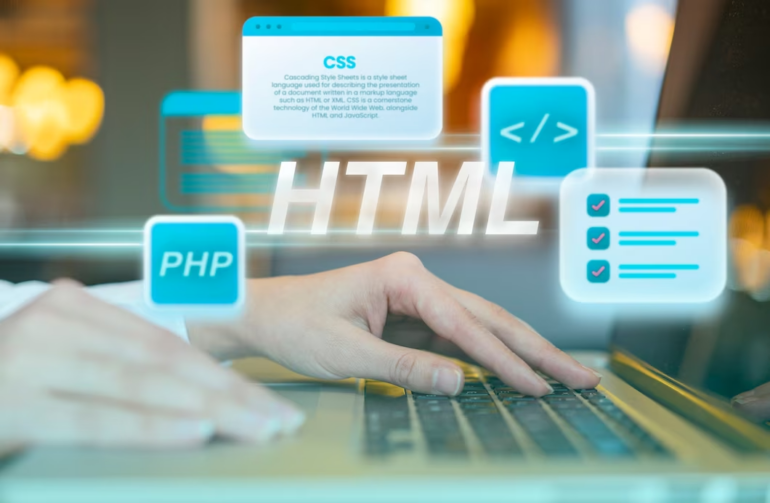Deciphering the best user interface (UI) framework can be a challenging task given the variety of available options. In this discussion, we’ll delve into a detailed comparison between two of the most popular front-end frameworks – Materialize and Bootstrap.
Bootstrap
Origin and Philosophy
Bootstrap, initially developed by Twitter, is an open-source framework that aids in crafting responsive and mobile-first websites. Its popularity has skyrocketed since its introduction in 2011, and it remains a beloved choice among web developers. The philosophy of Bootstrap rests on creating a consistent, intuitive interface across different platforms and devices.
Core Features and Benefits
Bootstrap offers a wide range of features that streamline the development process. These features provide developers with the tools they need to create responsive and visually appealing websites and web applications. Let’s explore the core features and benefits of Bootstrap in detail:
| Feature | Description |
|---|---|
| Predefined Classes and Components | Bootstrap provides a rich library of pre-designed elements such as buttons, carousels, navbars, dropdowns, and modals. These components are ready to use and can be easily integrated into projects, saving developers time and effort. They enable developers to quickly create consistent and professional-looking designs without starting from scratch. |
| Responsive Grid System | Bootstrap’s responsive grid system is a key strength of the framework. It offers a flexible and fluid grid layout that simplifies responsive design. The grid is based on a 12-column structure, allowing developers to divide the page layout into multiple columns. This grid automatically adjusts based on the device’s screen size, ensuring that the website or application looks great on different devices, including desktops, tablets, and smartphones. The responsive grid system eliminates the need for manual calculations and facilitates the creation of responsive layouts. |
| Customization Flexibility | Bootstrap provides a high level of customization flexibility. Developers can customize the framework to match their specific design requirements by leveraging Sass variables and mixins. Sass (Syntactically Awesome Style Sheets) is a powerful CSS preprocessor that allows developers to define variables, reusable styles, and mixins. This feature enables developers to customize the default styles of Bootstrap components and create unique designs. By using Sass, developers can efficiently manage the project’s styles and make global changes easily. |
| Strong Community Support | Bootstrap has gained popularity over the years and has built a strong community of developers and contributors. This active community plays a crucial role in Bootstrap’s success. Developers can benefit from extensive support through various channels, including forums, documentation, and online communities. The community provides a vast pool of resources, tutorials, and examples, making it easier to learn and troubleshoot issues. Strong community support ensures that developers can obtain quick solutions to common problems and stay updated with the latest trends and best practices in web development. |
Bootstrap offers a range of features that simplify and enhance the web development process. Its predefined classes and components, responsive grid system, customization flexibility, and strong community support make it a popular choice for developers. By leveraging Bootstrap, developers can save time, create responsive designs, customize their projects, and tap into a vast pool of resources and support.
Limitations
Despite its extensive capabilities, Bootstrap is not without its limitations:
- While the multitude of classes can simplify development, it can lead to excessive class dependencies and sometimes bloat the HTML;
- Since Bootstrap is widely used, websites developed with Bootstrap can often look similar unless significant customization is done.
Materialize
Origin and Philosophy
Materialize, inspired by Google’s Material Design principles, is a modern UI component library built with CSS, JavaScript, and HTML. It emphasizes clean lines, subtle animations, depth effects like lighting and shadows, and grid-based layouts.
Core Features and Benefits
Materialize offers a distinct set of features and benefits that differentiate it from Bootstrap. Let’s delve into the core features and advantages of Materialize in detail:
| Feature | Description |
|---|---|
| Material Design Principles | Materialize adheres to Material Design principles, a design language developed by Google. It focuses on creating a sleek and modern user interface that provides a unified experience across platforms and devices. By implementing Material Design principles, Materialize ensures visually appealing designs with clean aesthetics, intuitive interactions, and consistent design patterns. |
| Built-in Components and Classes | Materialize offers an extensive collection of built-in components and classes essential for modern web design. These include cards, forms, badges, breadcrumbs, and more. These pre-built elements save developers time and effort by providing ready-to-use solutions for common design elements. Developers can leverage these components to quickly create visually appealing and functional designs. Materialize’s components follow Material Design guidelines, ensuring a cohesive and visually consistent user experience. |
| Responsive Design Support | Similar to Bootstrap, Materialize supports responsive design through its grid system. The grid system allows developers to create flexible and responsive layouts that adapt to different screen sizes. However, Materialize distinguishes itself by emphasizing depth effects. These effects, such as shadows and animations, add visual hierarchy and depth to the interface, enhancing the overall user experience. With Materialize, developers can easily implement responsive designs that not only scale well but also incorporate engaging depth effects. |
| Ease of Use | Materialize stands out for its user-friendliness, making it ideal for beginners and developers who value simplicity. The framework provides clear and concise documentation, making it easy to understand and implement. Materialize’s intuitive and straightforward API allows developers to quickly grasp the framework’s concepts and start building responsive and visually appealing designs with ease. The ease of use of Materialize enables developers to efficiently create stunning websites and applications, even without extensive experience in web development. |
Materialize offers a unique set of features and benefits that make it a strong alternative to Bootstrap. Its adherence to Material Design principles ensures a sleek and modern user interface, while its extensive collection of built-in components simplifies the development process. With responsive design support and a focus on depth effects, Materialize enhances the visual experience of websites and applications. Moreover, its user-friendliness makes it accessible to developers of all skill levels. By leveraging Materialize, developers can create aesthetically pleasing and user-friendly designs that align with the principles of Material Design.
Limitations
Materialize, while robust, also has a few limitations:
- It does not offer as many customization options as Bootstrap;
- It has a smaller user community than Bootstrap, which might limit the amount of available online resources and support.
Bootstrap Vs. Materialize: A Comparative Examination

| Bootstrap | Materialize | |
|---|---|---|
| Design Philosophy | Endorses flat design and emphasizes responsiveness and mobile-first philosophy. | Implements Google’s Material Design focusing on animations, depth effects, and grid layouts. |
| Components | Extensive range of pre-styled components. | Slightly smaller component library with a different design aesthetic. |
| Customization | High flexibility via Sass variables and mixins. | Offers customization, but not as extensive as Bootstrap. |
| Community Support | Wide community support and resource availability. | Smaller, yet growing community with sufficient resources. |
| Learning Curve | Moderate, especially for those new to CSS frameworks. | Easier, due to straightforward implementation. |
When to Use Which?
The choice between Bootstrap and Materialize depends on the specific project requirements and personal preferences. Both frameworks offer unique features and benefits that cater to different needs. Let’s explore when it is appropriate to use each framework:
Bootstrap
Bootstrap is an excellent choice for projects that require a comprehensive set of components, extensive customization options, and strong community support. Here are some scenarios where Bootstrap is well-suited:
- Complex and Large-scale Projects: Bootstrap’s extensive component library provides a wide range of pre-designed elements and classes, making it suitable for complex and large-scale projects. The abundance of ready-to-use components, such as buttons, carousels, navbars, dropdowns, and modals, saves developers time and effort, enabling them to quickly build consistent and professional designs;
- Customization Flexibility: Bootstrap offers a high level of customization flexibility through Sass variables and mixins. Developers can tailor Bootstrap to match specific design requirements by modifying variables and creating custom styles. This feature is valuable for projects that demand unique designs and brand consistency;
- Strong Community Support: Bootstrap enjoys a strong community of developers and contributors. This active community provides extensive support through forums, documentation, and online communities. Developers can find a wealth of resources, tutorials, and solutions to common issues. If you prefer a framework with a large and supportive community, Bootstrap is an excellent choice.
Materialize
Materialize is suitable for projects that prioritize modern aesthetics, a clean interface, and the use of Material Design principles. Here are some scenarios where Materialize excels:
- Clean and Sleek Interface: Materialize brings a sleek and modern touch to designs, making it suitable for projects that require a clean and visually appealing interface. By adhering to Material Design principles, Materialize ensures a unified user experience across different platforms and devices. If you aim to create designs with a modern and polished look, Materialize is a strong contender;
- Depth Effects and Animations: Materialize places a particular emphasis on depth effects, such as shadows and animations. These effects add visual hierarchy and depth to the interface, enhancing the overall user experience. If your project demands engaging depth effects and animations to create a more immersive user interface, Materialize provides the necessary tools to achieve that.
Conclusion
Both Bootstrap and Materialize offer a rich set of tools and design philosophies that aid in creating modern, responsive web designs. Bootstrap excels with its extensive component library, high customizability, and substantial community support, making it a popular choice for complex projects. Conversely, Materialize shines with its clean, modern aesthetics, following Google’s Material Design principles, making it ideal for projects emphasizing sleek interfaces and intuitive user experience. The decision between the two hinges upon project-specific requirements, the aesthetic goals of the design, and the personal preferences of the development team.
FAQ
The answer depends on the context. For projects requiring highly customizable designs and extensive components, Bootstrap may be preferable. However, for those seeking a modern design aesthetic with simpler implementation, Materialize could be a better choice.
Technically, you can use both. However, doing so can lead to conflicts and inconsistencies due to overlapping styles. It’s generally recommended to stick to one framework for a cohesive design.
Yes, there are numerous other CSS frameworks such as Foundation, Bulma, Semantic UI, and Tailwind CSS, each with their unique strengths and use cases.
If you are a beginner, starting with Materialize might be slightly easier due to its straightforward implementation. However, learning Bootstrap can be more beneficial in the long run due to its popularity and extensive community support.
